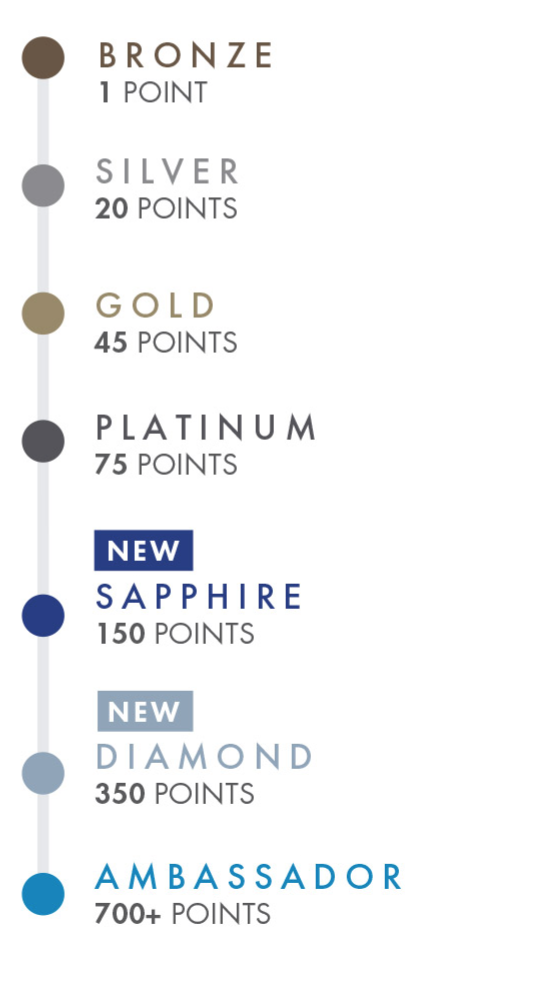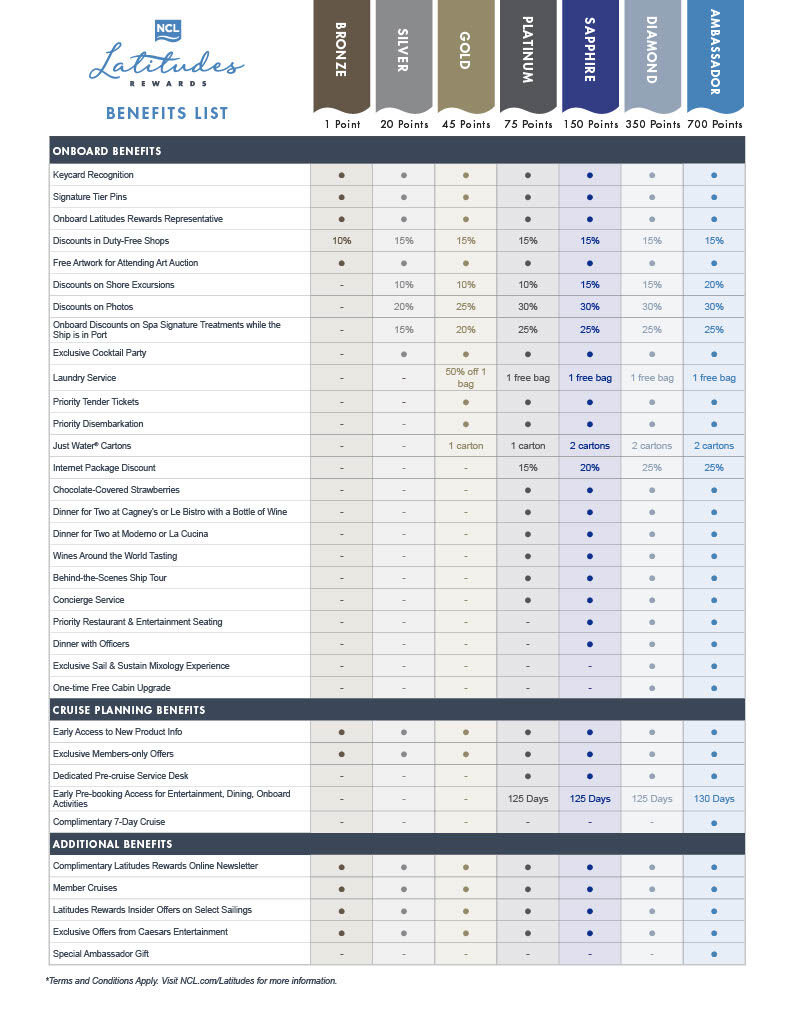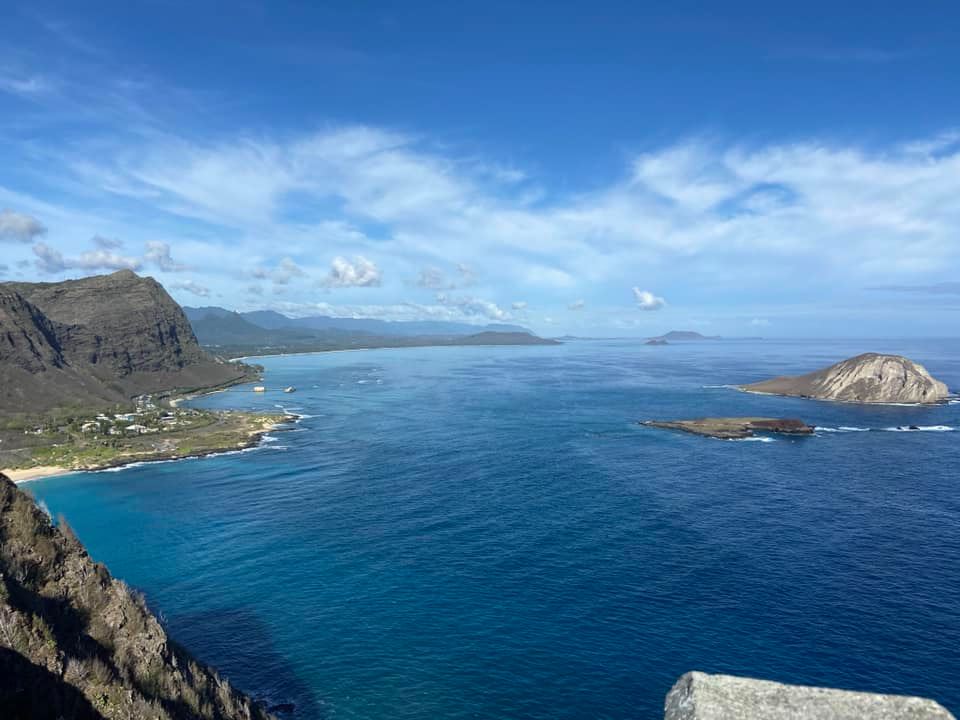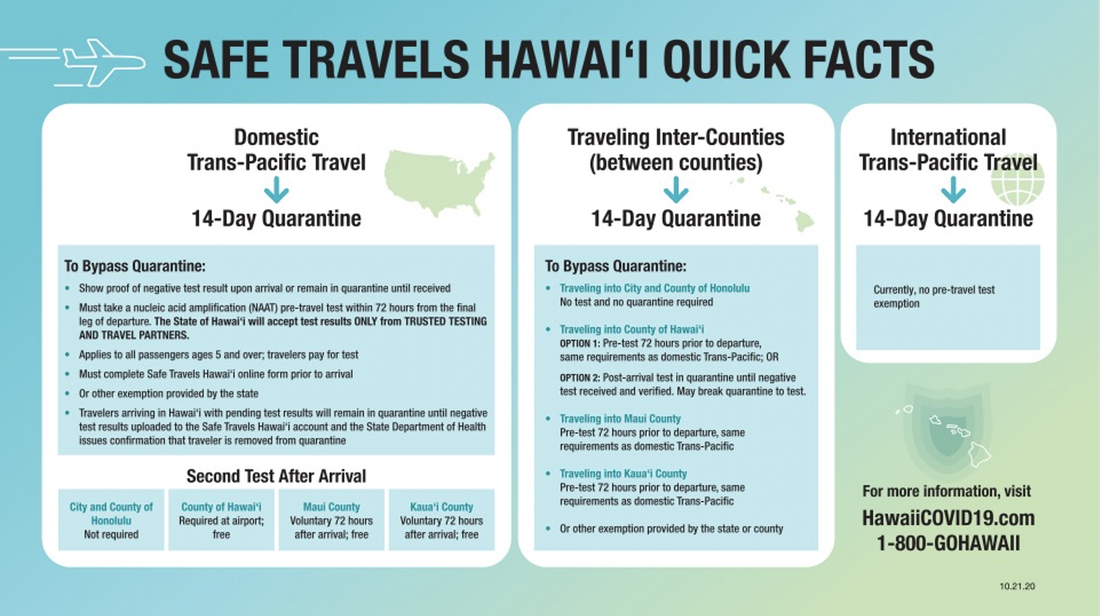|
Congratulations; you have now booked your first cruise! You are getting ready to explore the seas and the exquisite destinations that your ship will take you. It is a unique experience in traveling, so here are a few tidbits about cruising to help prepare you for the experience. Happy Sailing! 1. The check-in process can be LONGExpect to spend an hour doing your first online check-in. The online check-in process can be quite long. A few weeks before your cruise, you will have access to do your online check in. This is where the cruise line gets every single piece of information about you: emergency contact, incoming and outgoing flights, allergies, on-board debit or credit card information, identification documents, etc. For this process, you will need your reservation information for your cruise, your incoming and outgoing flight information (airline, flight times, and flight number), identification (i.d.) information—i.e., passport number, debit or credit card number, etc. *Unfortunately, this is something that your travel agent cannot do on your behalf. There are a lot of terms and conditions for you to review and sign-off on that your travel professional cannot sign for you. 2. The cruise lines pre-authorize your credit or debit cardA little known fact for new cruisers is that the cruise lines will pre-authorize your debit/credit card on file. Each cruise line is different in how much they pre-authorize, but it is safe to assume that it will be about $60-$100 per person per day (for a 8-day cruise, the pre-authorized rate will be between $480 - $800 per person). This assures that you can pay for anything that you buy on the ship including drinks, specialty dining meals, photos, the casino, or shore excursions. *Note: if you go above the per day amount, the cruise lines will do another pre-authorization on your card. This per day amount includes the gratuities—which will be discussed in tidbit #4. 3. Sea days are your vacation away from your vacation“Why are there so many sea days?! They’re just a waste!” is a comment I’ll receive from non-cruisers. The reality is that sea days give you time to truly relax on your vacation. When your cruise is chalked full of port calls, it can be rather tiresome! Getting up early every morning to rush off the ship, run around all day at your destination, and come back to a ship full of food and entertainment is exciting yet also exhausting. Sea days allow you to catch your breath as a vacation on your vacation—get that much needed spa service, check out shows, do a food/wine tasting, or merely hang out at the pool and rec centers. 4. TIPPING is not REQUIRED-- |
| | |
9. Book special promotions or before you get off the ship
It always varies. Here are some popular promos (terms and conditions of the cruise lines apply):
- Beverage package—typically including 15 drinks a day including alcohol under a certain rate, premium coffees and juices, and sodas
- Special dining meal—Cruises have free buffet style food and dining rooms included in your fare. However, they are include SPECIALTY dining restaurants to elevate your experience—Japanese sushi fine dining, premium steakhouse, fine dining French restaurant, etc. You get to choose a meal to enjoy during your cruise. Be sure to reserve your time!
- Internet package—a 250 minute internet package (1 login). To be honest, this is nice to have but can be unreliable on the ship. It really is only good to share social media posts to make all of your friends jealous … and keep mom and dad or your kids updated that your alive and well.
- Shore excursion discount—all of the cruise lines do this different and base it off of how many days your cruise is, but you can typically see a shore excursion discount of a certain dollar amount on one excursion or on one excursion per port.
- 3rd and 4th person free/taxes only—cruise lines will never truly give a cruise away, but they will give it to you for the taxes and port fee expenses. So if you see this deal know that you’ll still pay a bit for those spots, but it will be significantly reduced. *Note—gratuities are still paid on the 3rd and 4th guests in this promotional.
10. Gain membership and reward points with your favorites
Norwegian Cruise Lines just revamped their tiers on January 10, 2021. Here are their reward offerings in their latitudes loyalty program:
Happy Sailing
| Cruising is such a unique experience. With these 10 tidbits, you will be well-prepare to experience your first cruise. I cannot wait to hear about your experience on-board and to see your pictures. Please share those with your travel agent and tag us on facebook @CatalystTravel and #inspiringconnections. Happy Sailing! |
Not only does this video cover my 7 day trip to New York, but talks about some of the current tips and tricks to get around easily and without breaking the bank. I checked out Grand Central Terminal, the Statue of Liberty, Ellis Island, and the 9/11 Memorial Museum, Yankee Stadium, Tavern on the Green, The High Line, West Bank Cafe, the Metropolitan Art Museum, and so much more!
In addition to the video blog, check out my unique experiences and pictures at all of these lively New York staples:
https://www.facebook.com/erniel/posts/10165454132310201
Grand Central Terminal in New York City
https://www.facebook.com/erniel/posts/10165454049275201
First night in New York City
https://www.facebook.com/erniel/posts/10165455100020201
Statue of Liberty ?, Ellis Island and 9/11 Memorial & Museum
https://www.facebook.com/erniel/posts/10165454241990201
Yankee Stadium! Subway Series: Yankees vs Mets ⚾️
https://www.facebook.com/erniel/posts/10165454348320201
Tavern on the Green in New York City
https://www.facebook.com/erniel/posts/10165458093525201
The High Line in New York City
https://www.facebook.com/erniel/posts/10165458223945201
West Bank Cafe and fun times in the West Village in New York City
https://www.facebook.com/erniel/posts/10165459036015201
Metropolitan Art Museum of New York
https://www.facebook.com/erniel/posts/10165460621655201
Yankee Stadium New York City
https://www.facebook.com/erniel/posts/10165461103080201
July 4th Broadway ? Show at Feinstein’s 54 Below in New York City. Great Broadway ? Singers!
https://www.facebook.com/erniel/posts/10165463064085201
SoHo New York City
https://www.facebook.com/erniel/posts/10165463883095201
Cafeteria, Macy’s and Trump in New York City
https://www.facebook.com/erniel/posts/10165463987290201
Last Day in New York City
https://www.facebook.com/erniel/posts/10165464018475201
Last night in New York City! Dinner and “Springsteen on Broadway ? “!
https://www.facebook.com/erniel/posts/10165464074810201
| We had a great Zoom meeting update from the Gay Games Hong Kong 2022 Organizing Committee on February 18, 2021. If you missed it, check out the video recording of the event and the recap below: GGHK22 Gay Games is a 9-day international world-class diversity festival with multi-sports, arts & culture events and opening & closing ceremonies organised by the LGBTQ+ Community (Lesbian, Gay, Bisexual, Transgender, Queer, +) every 4 years. The goal of the Gay Games is to emancipate LGBTQ+ people around the world by educating people through sport, arts & culture events —in a spirit of better understanding. | |
01 Opening Ceremony: Saturday, November 12
02 Sport Events: Sunday, November 13 - Saturday, November 19
03 Festival Village: Friday, November 13 - Saturday, November 19
04 Arts & Culture Events: Friday, November 13 - Saturday, November 19
05 Closing Events: Saturday, November 19
Travel Packages Available for Wednesday, November 9 - Sunday, November 20
| Sports Update - 34 Venue Locations
| |
Catalyst Travel will help to put together travel packages for cities: Seattle, Portland, Vancouver, BC, LA, San Francisco, Denver, Phoenix, Las Vegas, Chicago, etc. If you are not a listed city, we can help with your travel packages (submit request). I, Ernie, will be joining other Catalyst Travel reps for a site visit to check out the hotels, restaurants, gay bars, etc. in Hong Kong in October 2021.
We will visit hotels within walking distance of the Gay Games Festival Village and will visit 5*, 4* and 3* Hotels and give our recommendations based on our site visits to these hotels. We will come back and provide you with recommendations for the best hotels to stay at based on your budget near the Gay Games Festival Village where the nightly festivities and entertainment will be. We will meet LIVE with the Gay Games Hong Kong Organizing Committee to know where all the sports venues are and understand all the public transportation options (subway, bus, Uber/Lyft, taxi) so we can provide you with the information you need for the Gay Games 2022!
Ernie LouAs an avid traveler, Ernie has explored a lot of the world having gone to 6 out of 7 continents (North and South America, Asia, Australia, and Africa--Egypt and South Africa). A native Seattleite, Ernie is a diehard Washington sports fan rooting on the Sounders, the Huskies, the Seahawks, the Mariners, and soon coming Kraken. No wonder why he is THE perfect person to schedule your next sports trip whether it's one of Catalyst Travel's Spring Training trips or chasing one of our trophy winning teams around the country. |
The State of Hawaii opened up Hawaii for tourists just about 2 months ago. Tourism is Hawaii’s number one industry so having it closed for tourists really impacted Hawaii’s economy. Most places were closed for about 3 months (May – July). Since Hawaii is made of islands it was important for them to control who could visit. They decided that every tourist would have to test for COVID-19 and have a negative result within 72 hours of their flight time or you will have to have a 10-day quarantine in Hawaii.
Pre Trip Requirement
You first will need to register as a tourist at the Hawaii Tourism Authority at the following web site: https://www.hawaiitourismauthority.org/
COVID-19 Test
You must get a COVID-19 test from one of the State of Hawaii’s Trusted Testing Partners – Here is the list: https://hawaiicovid19.com/travel-partners/ For example Bartell Drugs, Kaiser Permanente, Walgreens, CVS Health, Costco/AZOVA, etc. Once you get your results you should save it as a PDF and print it out. You will need to upload the COVID-19 negative test results to your profile on the Hawaii Tourism Authority web site under your profile. Also print out the test results and bring it with you to the airport.
My Trip
I am a member of Kaiser so my test was just a nasal one and not the one with the 8 inch swab up your nose ? My results came back within 12 hours. It was easy to get a PDF of the negative results, print them out and upload them to the Hawaii Tourism Authority web site.
I went early to the airport, Seattle-Tacoma International Airport so I could take advantage of the great new Alaska Airlines Lounge in the North Terminal. It’s amazing! If you have an Alaskan Airlines VISA card the daily pass is only $25. Great food and beverages but due to COVID-19 they were not serving any alcoholic beverages. The Alaska Airlines flight was about half full so fortunately I had one whole row to myself! I was upgraded to Premium Economy, so I had complimentary cocktails, beer and wine! Alaska has Wi-Fi and a great entertainment service so you can watch movies on your Smart Phone, iPad and laptop.
|
|
Queen Kapiolani Hotel
Waikiki Beach The Queen Kapiolani Hotel is ranked as the #3 BEST VALUE HOTEL in Oahu by people on Trip Advisor. We had a wonderful City View room with a balcony. The hotel has a wonderful lobby area with a great coffee café, Knots Coffee Roasters. Their 3rd floor deck includes a pool and a great restaurant and bar, the DECK! They have LIVE Music on Wednesday, Thursday and Sunday. Hawaii tourists are about 10% of the normal number so it’s not crowded at all. Everyone does wear masks and all restaurants and bars have social distancing seating and require you to wear masks when you are not seated at a table. Everything is OPEN and restaurants and bars are required to close by 10:00pm. |
Zippy’s
Zippy’s is like a Hawaiian/Asian version of Denny’s! For example on their menu they have Spam, Eggs and Rice for breakfast. They are Hawaii’s #1 gathering spot for classic local favorites, tasty specialty foods and friendly, welcoming service. Bring your appetite home to Zippy’s. They have Korean Chicken and Chili Plate, Furikake Miso Salmon Katsu, Ramen Noodles, Spaghetti, Roast Turkey, Beef Curry, etc. They are located all throughout Honolulu and there is one not to far from Waikiki
Shorefyre
Awesome restaurant right in the middle of Waikiki located at the International Marketplace above the Tesla dealership at 2330 Kalakaua Ave, Honolulu, HI 96815. As they say, “At ShoreFyre we cook up delicious food for breakfast, lunch and dinner. With a full bar at hand, they create some of Hawaii’s signature cocktails all in a laid back, casual setting. They make everything fresh with aloha spirit to create tastes and flavors that will recharge you no matter what’s on your itinerary.” The big bonus is they have LIVE music 7 nights at week! We went to 2 nights of music and you definitely should not miss Latin Night on Wednesday featuring Eddie Ortiz & Son Caribe. You must go on their web site to book a table on their open air lanai!
Here is a preview:
https://www.facebook.com/518810200/videos/10164717867700201/
https://www.facebook.com/518810200/videos/10164718120365201/
Hulu’s Bar & Lei Stand
Hulu’s Bar & Lei Stand has been in business for 46 years! It’s the best Honolulu’s Gay Bar and they welcome everyone! They have a great location and their bar is open air with an amazing view of Diamond Head. Great cocktails and food. You need to make a table reservation on their web site. Also they have a great person that sings on Fridays and Saturdays. He is a cute boy, Johnny the 3rd! https://www.facebook.com/iamjohnnymusic/
Roy’s at Hawaii Kai
“Cooking has been my life. Thank you for making it part of yours.”
— ROY YAMAGUCHI
Amazing restaurant with an amazing view just east of Honolulu.
You must order the AL FRESCO PRIX FIXE - $59 menu! Enjoy! Aloha!
- USS Arizona and Pearl Harbor Tour - This is an MUST Do! There is a great museum that provides you with the background on how the US and Japan were negotiating right up to the surprise attack. Order your tickets on this site and it’s by date and time.
- Bishop Museum - Great museum that provides you with the cultural history of Hawaii. Must visit this museum! Go online and order your tickets ahead of time since it’s by date and time.
- Iolani Palace – The Royal Hawaiian Palace - Unfortunately we couldn’t get a visit reservation but this is a MUST SEE in Honolulu! Reserve ahead of time before your trip.
|
Best Luau
Ka Moana Luau Oahu’s only east-side luau with award-winning entertainment and one of a kind show- starts with fire and finishes with fire, unlike anything else! Enjoy a short yet beautiful drive to iconic Sea Life Park. Breathtaking ocean views, interactive activities for the family and an amazing menu. The perfect luau for the whole family! https://www.moanaluau.com/ Discount Tickets https://bestof-hawaii.com/tours/ka-moana-luau-deluxe-luau-package/ Here is the fire performance: https://www.facebook.com/518810200/videos/10164706755265201/ Beaches Here are the great beaches you should visit:
Photos from my Hawaii Trip: https://www.facebook.com/media/set/?set=a.10164751105315201&type=3 |
Ernie LouErnie is an avid traveler having been to 6 out of the 7 continents. After working in various tech and PR jobs, Ernie is extending his expertise to the travel industry as a travel agent with Catalyst Travel. If he's not hosting a party, a cruise trip, or rooting on the Sounders, Huskies, or Seahawks, Ernie is probably out exploring more of the world. Read more of his bio for how he can help you on your next trip. |
|
The Boeing 737-Max has been marred in controversy since March 2019. 20 months later, on 18 November 2020, the FAA Administrator Steve Dickson announces that the agency will unground the 737 Max and will rescind the March 13, 2019 Emergency Order. The 98 page Summary of the FAA's Review of the Boeing 737 Max details not only the original circumstances of the grounding but also the rigorous review process, new operational procedures, training enhancements, and steps to return to service.
The initial events indicating a problem with the Boeing plane happened on an October 29, 2018, flight out of Jakarta, Indonesia and a March 10, 2019, flight out of Addis Ababa, Ethiopia. The crash from Indonesia was immediately followed up with an Emergency Airworthiness Directive addressing their preliminary concerns. After the second crash from Ethiopian Airlines a more in-depth analysis was conducted linking "the potential relationship established between the two accidents" and issued an Emergency Order to ground all Boeing 737-Max planes. |
|
Sparking widespread alarm, people from around the world questioned what kind of planes they would fly on--scrutinizing every make and model. I, myself, remember flying in mid-March of 2019 wondering if I should keep my flight on a Southwest 737-Max. I decided to keep my flight, said my obligatory pre-flight prayers, and went to Phoenix for Spring Training without incident.
While in Arizona, the Emergency Order was announced. Airlines around the country scrambled to shift passengers from the already filled, more spacious aircraft to smaller ones. Droves of travelers, like myself, were caught stranded or forced to change their itineraries. Getting to the airport a couple of hours earlier than normal, I didn't have a seat assignment. I waited in a seemingly unending line to see if I got bumped from my flight. The mass scramble displaced a dozen travelers from my flight alone, which included me. However, instead of being stuck in the airport for hours or even days like others, I immediately got on a flight to Seattle via VEGAS.
Since that time, Boeing and the whole aviation industry has been repeatedly hit with one thing then another. Throughout the rest of the year, Boeing had major set-backs with the 737-Max investigation. Combine these setbacks with Covid-19 groundings, orders for planes were cancelled left-and-right. Now, after 2+ years since the first incident and 20 months after Administrator Dickson's Emergency Order, Boeing is finally given good news--a long-awaited green light for flight.
The FAA has identified 7 safety items that needed to be addressed, which include adjusting the software systems for the Angle of Attack (AOA) sensor, providing significantly advanced training for the system, and updating maintenance requirements. With the FAA administrator's own test-flights and first-hand experience handling the airplane, he has stated, "I am 100% comfortable with my family flying on it."
|
I have had three trips since things where shut down this past March due to COVID-19. My first trip was in June to Chicago. In June the flights were not full and fortunately Alaska Airlines has maintained a policy of keeping the middle seat empty on all their flights for Social Distancing requirements. Alaska Airlines just announced they will extend this policy on all their flights until January 6, 2021. Everyone boarding the flight is required to wear a mask. The only time you do not have to wear you mask is when you are drinking or eating. To minimize Flight Attendant interactions with passengers there was only 1 beverage service with minimal choices like water, Coke and Diet Coke. All the passengers adhered to the mask wearing policy so I felt safe throughout the flight. The air filtration system on airliner are excellent in filtering out particles.
|
|
|
A just released airline safety by the US Department of Defense and United Airlines conducted 300 tests in over six months with dummies in-flight to examine the possible spread of droplets. The study says the risk of COVID-19 exposure onboard its aircraft is "virtually non-existent" and when masks are worn there is only a 0.003% chance particles from a passenger can enter the passenger's breathing space who is sitting beside them.
When I arrived in Chicago, my good friend informed me of the local COVID-19 situation and any restrictions on businesses like restaurants and bars. Even though indoor seating was available at a reduced capacity we always choose to sit outdoors. We wore masks when we were walking around Chicago and everyone else was following the mask wearing rule. When I returned from my Chicago trip, like I have done after each trip during COVID-19, I took a COVID-19 test at one of the free City of Seattle COVID-19 drive up testing centers. You can just go online and schedule an appointment and it’s free. You get the test results online within 48 hours. My other two trips, one to Los Angeles and one to Fort Lauderdale were very similar in terms of COVID-19 safety precautions. My flights to and from Los Angeles was on Alaska Airlines so the middle seat was empty. My flights to and from Fort Lauderdale was on American Airlines. American does not have the same policy as Alaska so their middle seats were filled. Fortunately I was lucky on 3 of the 4 legs of my trip that the middle seat was empty. My last trip to Fort Lauderdale was September 30 – October 5, 2020 and the airport seemed much busier than my first trip in June. Passengers seem to be returning to flying and the volume is picking up. TSA announced last week that they screened the most passengers so far since travel dropped in March due to COVID-19. |
Ernie LouErnie is an avid traveler having been to 6 out of the 7 continents. After working in various tech and PR jobs, Ernie is extending his expertise to the travel industry as a travel agent with Catalyst Travel. If he's not hosting a party, a cruise trip, or rooting on the Sounders, Huskies, or Seahawks, Ernie is probably out exploring more of the world. Read more of his bio for how he can help you on your next trip. |
|
|
Travelers wanting to explore the great state of Hawai'i do not have to spend 14-days in mandatory quarantine anymore. Travelers now have the option to take a pre-test for CoVid-19 for instant access.
In order to be exempt from the 2 week quarantine, participants need to take a "Nucleic Acid Amplfication test from a trusted testing partner approved by the Hawaii Department of Health within 72 hours from their final leg of departure and [have] a negative result," according to the Hawai'i Tourism Authority. |
The Pre-Test Program is effect as of October 15, 2020. However, like a lot of other things during the CoVid-Era, these parameters can change on a moments notice. We recommend checking in with your dedicated travel agent to help you stay updated on entry requirements into Hawai'i. If you do not yet have a dedicated travel agent, make a vacation request on the Catalyst Travel website. We will have our Hawai'i specialists follow up with you.
**Update: As of October 26, the County of Maui and the governor of Hawai'i have declared a Public Health Emergency and reissued guidelines on a 14-day quarantine for visitors to the island of Lanai.**
Despite the closure, flights in and out of both countries continue with some tourist destinations opening with extra health safety measurements in place.
There are sections of Mexico where you are not advised to go because of crime and kidnapping:Do Not Travel To:
- Colima state due to crime.
- Guerrero state due to crime.
- Michoacán state due to crime.
- Sinaloa state due to crime.
- Tamaulipas state due to crime and kidnapping.
- Chihuahua state due to crime.
- Coahuila state due to crime.
- Durango state due to crime.
- Jalisco state due to crime.
- Mexico state due to crime.
- Morelos state due to crime.
- Nayarit state due to crime.
- Nuevo Leon state due to crime.
- San Luis Potosi state due to crime.
- Sonora state due to crime.
- Zacatecas state due to crime.
**When planning your trip to Mexico, be sure to consult your travel agent on the latest travel advisories.**
Travel Advisories, according to the U.S. Department of State:
Level 1 - Exercise Normal Precautions: This is the lowest advisory level for safety and security risk. There is some risk in any international travel. Conditions in other countries may differ from those in the United States and may change at any time.
Level 2 - Exercise Increased Caution: Be aware of heightened risks to safety and security. The Department of State provides additional advice for travelers in these areas in the Travel Advisory. Conditions in any country may change at any time.
Level 3 - Reconsider Travel: Avoid travel due to serious risks to safety and security. The Department of State provides additional advice for travelers in these areas in the Travel Advisory. Conditions in any country may change at any time.
Level 4 – Do Not Travel: This is the highest advisory level due to greater likelihood of life-threatening risks. During an emergency, the U.S. government may have very limited ability to provide assistance. The Department of State advises that U.S. citizens not travel to the country or to leave as soon as it is safe to do so. The Department of State provides additional advice for travelers in these areas in the Travel Advisory. Conditions in any country may change at any time.






